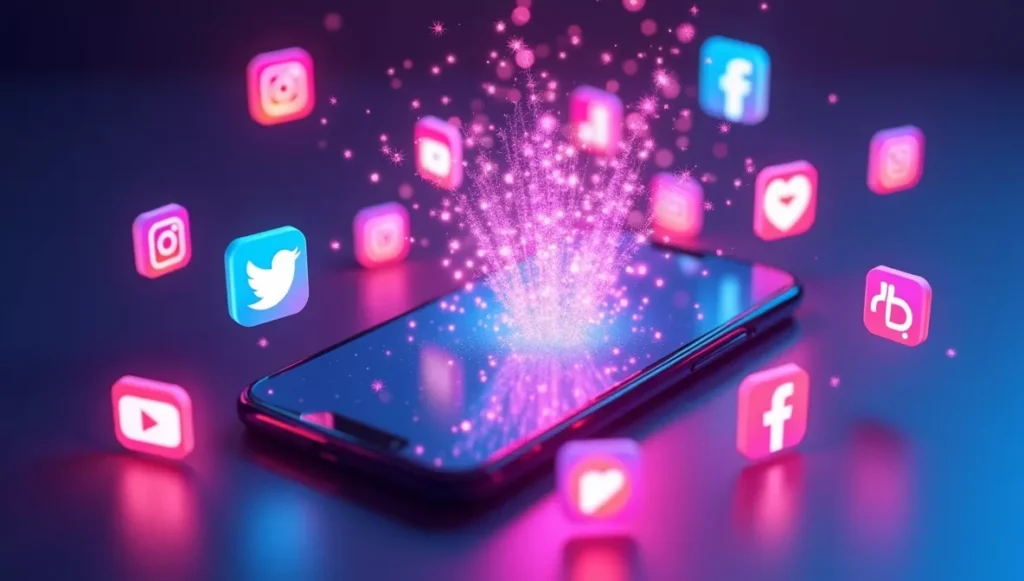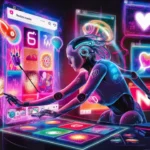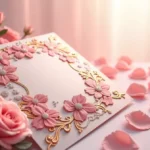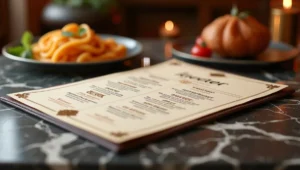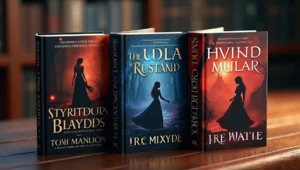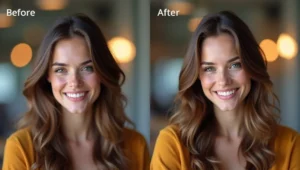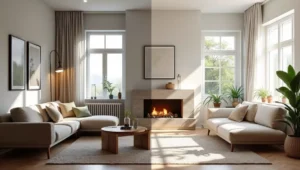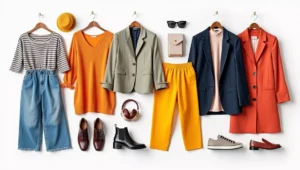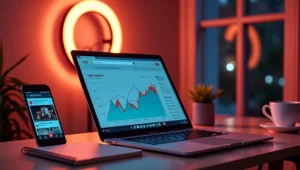Have you ever stared at a blank canvas, screen, or wall and thought, “What colors should I use?” You’re not alone! Picking the right colors can feel like solving a super hard puzzle. But guess what? There’s amazing technology that can help you – and it’s called AI (that’s short for Artificial Intelligence).
- What Is a Color Palette and Why Does It Matter?
- Why Use AI for Color Palettes?
- 💖 You Might Also Like
- The Best AI Tools for Color Palette Generation
- 1. Khroma – Your Personal Color AI
- 2. Coolors – The Speed Champion
- 3. Adobe Color (formerly Kuler) – The Professional’s Choice
- ✨ More Stories for You
- 4. Huemint – The Machine Learning Marvel
- 5. Palette.fm – The Photo Wizard
- 6. Colormind – The Deep Learning Dynamo
- 🌟 Don’t Miss These Posts
- 7. Color Hunt – The Trend Spotter
- 8. Picular – The Google of Colors
- 9. AI Color Palette Generator by Designs.ai
- 10. Colorffy – The Mood Master
- How to Choose the Right AI Tool for You
- Tips for Using AI Color Palette Generators Like a Pro
- Start with Inspiration
- Lock What You Love
- Think About Where You’ll Use It
- Test in Real Life
- Trust Your Gut
- Learn the Basics
- Save Everything
- Common Color Palette Mistakes (And How to Avoid Them)
- Real-World Examples: When to Use Each Tool
- The Science Behind AI Color Generation
- Future of AI Color Palette Generation
- Making the Most of Your Color Palettes
- Save the Details
- Create a Mood Board
- Test, Test, Test
- Share and Get Feedback
- Stay Organized
- Frequently Asked Questions
- Conclusion: Your Colorful Future Awaits!
Think of AI as a super-smart robot friend who knows everything about colors. It can look at millions of pictures, understand which colors look good together, and create beautiful color palettes in just seconds. Cool, right?
In this guide, we’ll explore the best AI tools that can help you create stunning color combinations, whether you’re designing a website, painting your room, making art, or just having fun with colors!
What Is a Color Palette and Why Does It Matter?
Before we jump into the AI tools, let’s understand what a color palette actually is.
Imagine you’re painting a picture. A color palette is like your paint tray—it’s a collection of colors that work well together. Just like you wouldn’t wear pajamas to a wedding (well, most people wouldn’t!), some colors just don’t belong together.
A good color palette makes everything look:
- Professional and polished
- Easy on the eyes
- Harmonious (that means they all get along!)
- Memorable and attractive
Bad color choices? They can make even the coolest design look messy, confusing, or just plain ugly. That’s why choosing the right colors is so important!
Why Use AI for Color Palettes?
You might be wondering: “Can’t I just pick colors myself?” Of course you can! But AI tools make it SO much easier. Here’s why:
Speed: AI can generate dozens of color combinations in seconds. Doing this by hand could take hours!
Expert Knowledge: These AI tools have learned from millions of designs, so they “know” what works and what doesn’t.
No Experience Needed: You don’t need to be a professional designer or artist. The AI does the hard work for you.
💖 You Might Also Like
Endless Options: Stuck in a creative rut? AI can show you color combinations you never would have thought of.
Learning Tool: As you use these tools, you’ll start to understand color theory without even trying!
The Best AI Tools for Color Palette Generation
Now for the exciting part—let’s explore the best AI tools that can help you create amazing color palettes!
1. Khroma – Your Personal Color AI
What makes it special: Khroma learns what YOU like!
Khroma is like having a color expert who gets to know your taste. When you first use Khroma, it shows you 50 different colors and asks you to pick the ones you love. Then, its AI brain remembers your preferences and creates palettes just for you!
How it works:
- You train the AI by choosing your favorite colors
- It creates unlimited color combinations based on your taste
- You can search for specific colors or types of palettes
- Save your favorites to come back to later
Best for: People who want personalized color suggestions that match their unique style. If you’re designing a brand, website, or personal project, Khroma learns what you like and keeps getting better.
The catch: You need to spend a few minutes training it first, but it’s actually pretty fun! Think of it like teaching a puppy new tricks.
2. Coolors – The Speed Champion
What makes it special: It’s super fast and incredibly easy to use!
Coolors is like a color slot machine—but instead of losing money, you always win beautiful colors! Just press the spacebar on your keyboard, and boom—a new color palette appears instantly.
How it works:
- Hit spacebar for instant color palettes
- Lock colors you like and generate new ones for the rest
- Adjust colors with simple sliders
- Export palettes in many formats
- Use the mobile app to create palettes from photos
Best for: Everyone! Seriously, if you’re brand new to design or you’re a professional, Coolors works great. It’s perfect when you need ideas fast.
Fun fact: You can shake your phone to generate a new palette in the mobile app. It’s oddly satisfying!
3. Adobe Color (formerly Kuler) – The Professional’s Choice
What makes it special: It’s made by Adobe, the company behind Photoshop and other pro design tools.
Adobe Color is like the wise teacher of color palette generators. It uses color theory rules (fancy stuff like complementary, analogous, and triadic colors) to create palettes that designers swear by.
✨ More Stories for You
How it works:
- Choose a color rule (complementary, monochromatic, etc.)
- The AI suggests colors that follow that rule
- Extract colors from uploaded images
- Explore thousands of palettes from the community
- Works perfectly with Adobe design apps
Best for: People who want to learn color theory while creating palettes. Also great if you use Adobe products like Photoshop or Illustrator.
Special feature: You can upload any photo and Adobe Color will extract a perfect palette from it. Got a picture of a sunset? Boom—instant sunset-inspired colors!
4. Huemint – The Machine Learning Marvel
What makes it special: It uses actual machine learning to create palettes for specific projects!
Huemint is like a color fortune teller that knows exactly what your project needs. You tell it what you’re making (a website, a logo, a poster), and it generates colors specifically for that use.
How it works:
- Choose your project type (website, branding, illustration, etc.)
- The AI generates colors that work for that specific use
- See how colors look in a real mockup
- Regenerate until you find the perfect match
- Fine-tune individual colors
Best for: Web designers and people creating digital content. It’s especially awesome because you can see how the colors will actually look in your project.
Why it’s smart: Huemint knows that colors for a website header are different from colors for a children’s book. It adjusts accordingly!
5. Palette.fm – The Photo Wizard
What makes it special: It makes amazing palettes from any photo!
Ever seen a photo and thought, “Wow, I love these colors”? Palette.fm can grab those exact colors and turn them into a usable palette. It’s like having color-picking superpowers!
How it works:
- Upload any photo or image
- The AI analyzes it and pulls out the main colors
- Get a clean, organized palette
- Adjust how many colors you want
- Download in different formats
Best for: People who get inspired by photos, nature, art, or existing designs. Perfect for matching colors to a specific vibe or mood.
Pro tip: Take photos of things you love—a flower garden, a sunset, your favorite outfit—and create palettes from them!
6. Colormind – The Deep Learning Dynamo
What makes it special: It uses deep learning to generate colors that actually look good together!
Colormind has been trained on thousands of successful designs, movies, and artwork. It’s like it went to color school and got straight A’s!
🌟 Don’t Miss These Posts
How it works:
- Generate random palettes with one click
- Lock specific colors and generate around them
- Choose different style presets (material design, movies, vintage, etc.)
- See your palette on website templates
- Works entirely in your browser
Best for: Web designers and app creators who want colors that work in digital designs.
Cool feature: Colormind has a special “website” template that shows how your colors look on an actual website. No guessing needed!
7. Color Hunt – The Trend Spotter
What makes it special: It shows you what color combinations are trending right now!
Color Hunt is like the Instagram of color palettes. Real designers from around the world share their favorite color combinations, and the most popular ones rise to the top.
How it works:
- Browse thousands of hand-picked palettes
- Filter by popularity, newest, or random
- Search for specific colors
- See what’s trending in the design world
- Save your favorites
Best for: People who want to stay on-trend and get inspired by what real designers are using. Great for following design trends!
Why people love it: It’s beautiful to look at and super easy to use. Sometimes you just want to scroll through pretty colors!
8. Picular – The Google of Colors
What makes it special: It’s like Google Image Search, but for colors!
Type any word into Picular—like “ocean,” “cozy,” “energetic,” or “midnight”—and it shows you the colors associated with that feeling or thing. It’s magical!
How it works:
- Type any word or feeling
- Picular searches Google Images for that word
- It extracts the most common colors from those images
- You get a palette that represents that concept
Best for: People who think in feelings and concepts rather than color names. If you want your design to feel “peaceful” but don’t know what colors that means, Picular has your back!
Mind-blowing use: Type emotions like “happy,” “calm,” or “exciting” and see what colors represent those feelings!
9. AI Color Palette Generator by Designs.ai
What makes it special: It’s part of a whole suite of AI design tools!
This tool is integrated into a larger AI design platform, so you can create color palettes and then use them in other AI-powered design tools on the same site.
How it works:
- Generate palettes with AI
- Input keywords or moods
- Get instant palette suggestions
- Use those colors in other design tools
- Save to your library
Best for: People who want an all-in-one design solution. If you’re creating a whole project, you can generate colors, logos, and more in one place.
Bonus: It connects with other AI design tools, so your color palette can automatically apply to your entire project!
10. Colorffy – The Mood Master
What makes it special: It creates palettes based on emotions and moods!
Colorffy understands that colors aren’t just pretty—they make us feel things. Want colors that feel “energetic”? “Calm”? “Professional”? Just tell Colorffy!
How it works:
- Choose a mood or emotion
- The AI generates palettes that evoke that feeling
- Browse by categories
- Refine and adjust
- Export for your projects
Best for: Emotional and intuitive designers who want their colors to communicate specific feelings. Perfect for branding and marketing projects!
Psychology bonus: Colorffy uses color psychology principles, so you’re not just getting pretty colors—you’re getting colors that actually work!
How to Choose the Right AI Tool for You
With so many awesome options, how do you pick? Here are some questions to ask yourself:
What are you creating?
- Website or app? → Try Huemint, Colormind, or Adobe Color
- Art or illustration? → Try Coolors or Khroma
- Branding or logo? → Try Adobe Color or Designs.ai
- Room design or fashion? → Try Palette.fm or Color Hunt
How much time do you have?
- Need it fast? → Coolors is your friend
- Want to explore and learn? → Adobe Color or Khroma
- Looking for inspiration? → Color Hunt or Picular
What’s your experience level?
- Total beginner? → Start with Coolors or Color Hunt
- Some experience? → Try Khroma or Colormind
- Professional designer? → Adobe Color or Huemint
What’s your budget?
- Free? → Most of these have free versions!
- Willing to pay? → Premium versions offer more features
Tips for Using AI Color Palette Generators Like a Pro
Now that you know the tools, here are some secrets to getting the best results:
Start with Inspiration
Don’t just randomly generate palettes. Have something in mind! Look at:
- Photos you love
- Nature (sunsets, flowers, oceans)
- Art you admire
- Colors in your favorite things
Upload these to tools like Palette.fm or Adobe Color to extract their colors!
Lock What You Love
Most tools let you “lock” colors you like while generating new ones for the rest. This is super powerful! You can keep your favorite blue while finding perfect companions for it.
Think About Where You’ll Use It
Colors look different on screens, paper, fabric, and walls. A palette that’s perfect for a website might be too bright for a bedroom wall. Consider your medium!
Test in Real Life
Don’t just look at the palette—see how it works! Many tools show mockups, but you can also:
- Apply colors to a sketch
- Create a quick design
- Print it out and look at it in different lights
Trust Your Gut
AI is smart, but you know what you like! If a palette feels wrong, try another one. These tools are meant to help you, not make decisions for you.
Learn the Basics
Even though AI does the work, learning a little color theory helps a lot:
- Complementary colors (opposite on the color wheel) create contrast
- Analogous colors (next to each other) create harmony
- Monochromatic (shades of one color) creates elegance
- Triadic (three evenly spaced colors) creates balance
Save Everything
Found a palette you like? Save it! You might not need it now, but it could be perfect for a future project. Most tools let you create libraries or collections.
Common Color Palette Mistakes (And How to Avoid Them)
Even with AI helping you, watch out for these common traps:
Too Many Colors: Just because you can use 10 colors doesn’t mean you should! Usually, 3-5 colors is perfect. More than that gets messy.
Not Enough Contrast: Make sure your colors are different enough. If everything is the same brightness, it’ll look muddy.
Ignoring Accessibility: Some people have colorblindness or vision issues. Make sure your colors work for everyone! Many AI tools have accessibility checkers.
Following Trends Too Much: Trends change, but your project might stick around. Make sure your colors fit your project, not just what’s popular now.
Forgetting About Backgrounds: A color that looks great on white might disappear on black. Test your palette on different backgrounds!
Real-World Examples: When to Use Each Tool
Let’s imagine some scenarios to help you pick the right tool:
Scenario 1: The Bedroom Makeover You’re painting your bedroom and need to choose colors. Use Palette.fm to upload photos of your favorite cozy spaces, or use Picular to search for “relaxation” and “comfort.”
Scenario 2: The School Project Website You’re making a website for a class project. Use Huemint to generate a palette specifically for websites, then see how it looks in their mockup.
Scenario 3: The Logo Design You’re creating a logo for your pretend company. Use Colorffy to pick colors that match the feeling you want (professional? fun? creative?), or use Adobe Color to explore different color theory approaches.
Scenario 4: The Art Project You’re painting or drawing and need inspiration. Use Coolors to quickly generate ideas, locking colors you like and changing the rest until you find something exciting.
Scenario 5: The Fashion Choice You’re putting together an outfit. Use Color Hunt to browse trendy combinations, or use Palette.fm to pull colors from fashion photos you love.
The Science Behind AI Color Generation
Want to know how these tools actually work? Here’s the simple version:
Machine Learning Magic: AI tools learn by looking at thousands (or millions!) of successful designs, photos, and artworks. They notice patterns—which colors appear together most often, which combinations people like, and which rules designers follow.
Color Theory Rules: The AI is programmed with the basic rules of color theory that artists have used for hundreds of years. It knows about the color wheel, complementary colors, and harmony.
Data Training: Some tools, like Colormind, have been trained on specific datasets (like popular movie color schemes or material design palettes). This makes them experts in particular styles.
Image Analysis: When you upload a photo, the AI scans every pixel, groups similar colors together, and finds the most prominent or harmonious ones.
User Feedback: Every time someone likes or saves a palette, the AI learns. It gets smarter over time by understanding what real people actually use and love.
Future of AI Color Palette Generation
The world of AI is moving fast! Here’s what might be coming:
Emotion Detection: Future AI might analyze your mood through your device’s camera and suggest colors based on how you’re feeling!
AR Integration: Imagine pointing your phone at your room and seeing different color palettes applied to your walls in real-time!
Voice Control: “Hey AI, show me calming colors for a meditation app” could become reality.
More Personalization: AI that learns from all your projects and understands your style deeply, becoming your personal color consultant.
Cross-Platform Design: AI that creates a palette and automatically applies it across your website, app, business cards, and more—all perfectly coordinated.
Making the Most of Your Color Palettes
Once you’ve generated the perfect palette, here’s how to use it:
Save the Details
Write down or save:
- Hex codes (like
#FF5733) - RGB values (like rgb(255, 87, 51))
- Color names or descriptions
Most tools let you export this information. Don’t rely on memory!
Create a Mood Board
Put your colors together with:
- Photos that inspired them
- Typography ideas
- Texture examples
- Other design elements
This helps you see the full picture of your project.
Test, Test, Test
Try your colors in different situations:
- Different lighting conditions
- Various screen types
- Printed on paper
- Different materials
Share and Get Feedback
Show your palette to friends, family, or online communities. Fresh eyes can spot issues you might miss!
Stay Organized
If you’re working on multiple projects, keep your palettes organized. Name them clearly (“Beach House Project,” “Logo Ideas – Version 3”) so you can find them later.
Frequently Asked Questions
Do I need to pay for these tools? Most have free versions that work great! Premium versions offer extra features, but beginners can do a lot with free tools.
Can I use these palettes for commercial projects? Generally, yes! Colors themselves can’t be copyrighted (except in rare cases like specific brand colors). But always check each tool’s terms of service.
What if I don’t like any of the suggestions? Keep generating! These tools can create unlimited variations. You can also start with a color you love and build around it.
How do I know if colors work well together? Trust the AI! These tools use proven color theory. But also trust your eyes—if it looks good to you, it probably is good.
Can I edit the colors after generating them? Absolutely! Most tools let you adjust hue, saturation, and brightness. Think of AI suggestions as starting points.
Conclusion: Your Colorful Future Awaits!
Choosing colors doesn’t have to be scary or confusing anymore. With these amazing AI tools, you have super-smart assistants ready to help you create beautiful, harmonious color palettes in seconds.
Whether you’re designing a website, painting a room, creating art, or just exploring your creativity, there’s a perfect AI tool waiting for you. Start with the easy ones like Coolors or Color Hunt, then explore the more advanced options as you grow.
Remember: these tools are here to help you, not replace your creativity. They’re like having a color expert friend who offers suggestions, but you’re still the artist, the designer, the decision-maker. Your taste, your vision, and your style are what matter most.
So go ahead—pick a tool from this list and start playing with colors! Generate a few palettes, save your favorites, and watch how quickly you go from “I don’t know what colors to use” to “Check out this amazing color scheme I created!”
The world needs more beautiful colors, and now you have the tools to create them. What will you make first?
Quick Recap – Best Tools for Different Needs:
- Best for Beginners: Coolors or Color Hunt
- Best for Personalization: Khroma
- Best for Learning: Adobe Color
- Best for Speed: Coolors
- Best for Websites: Huemint or Colormind
- Best for Photos: Palette.fm
- Best for Emotions: Colorffy or Picular
- Best for Trends: Color Hunt
- Best All-Around: Coolors (it’s fast, free, and versatile!)
Now stop reading and start creating! Your perfect color palette is just a click away. 🎨
